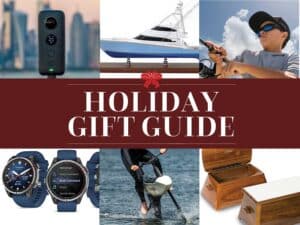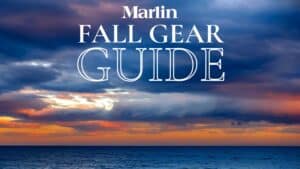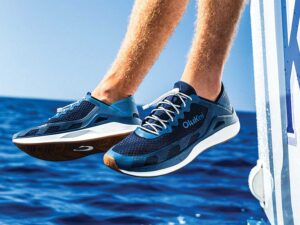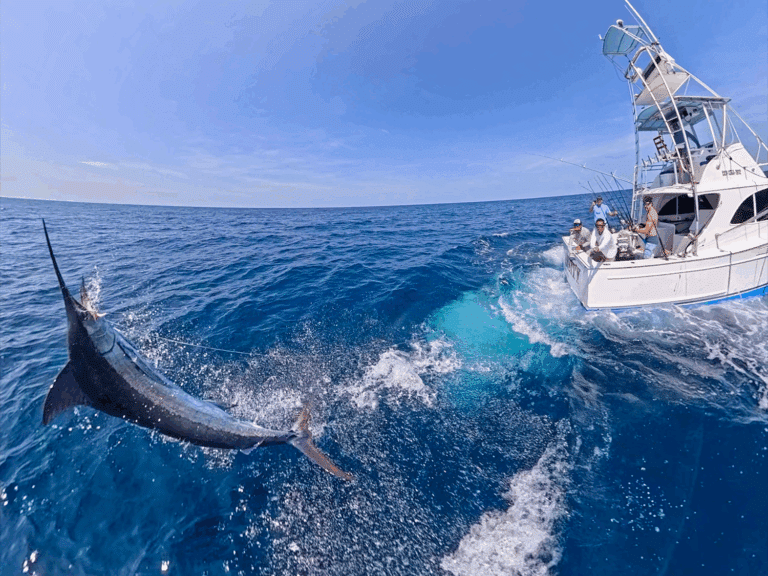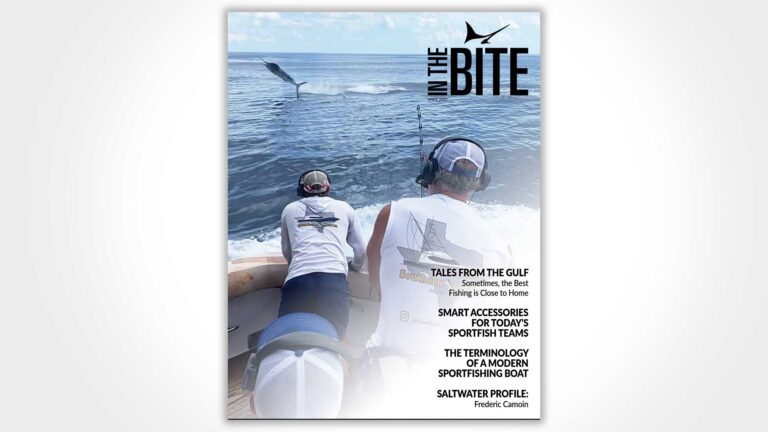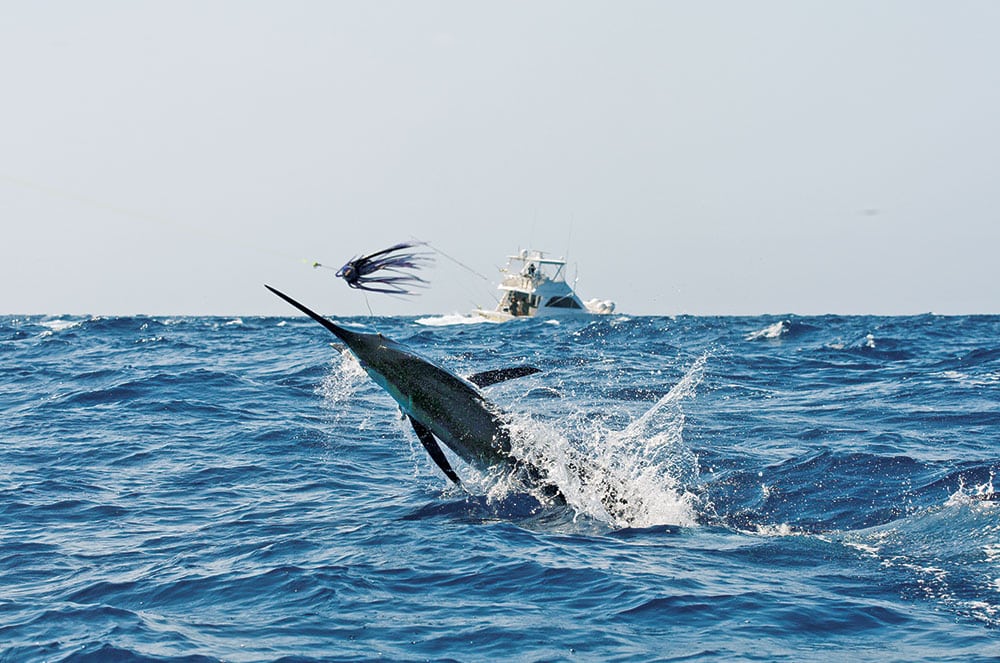
Whether you’re out fun fishing or competing in a big-money tournament, lure fishing provides the opportunity to cover a lot of ground and a great chance at hooking the fish of a lifetime. We asked top captains from Cape Verde, Bermuda, Kona and the Gulf of Mexico to spill the beans on some of their secrets to help you become a better lure fisherman. These tips will surely raise your game the next time you are big-game fishing with lures.
Our Team of Experts

Capt. Marty Bates
Raised in New Zealand but born in England, Marty Bates began fishing the productive waters off Cape Verde in 2005 and continues to release great numbers of blues on La Onda season after season. Winning several Billfish Foundation tag-and-release awards over the last several years as both a mate for Capt. Zak Conde and as a captain, Marty pulls a variety of lures and often uses lures as teasers when pitching dead-bait offerings if they are biting well.
Bates’ Top Lures
1. Andrew Moyes Punisher
2. Koya Super Plunger
3. Aloha Lures Smash Bait
4. Joe Yee Super Plunger
5. Roddy Hayes Andromeda
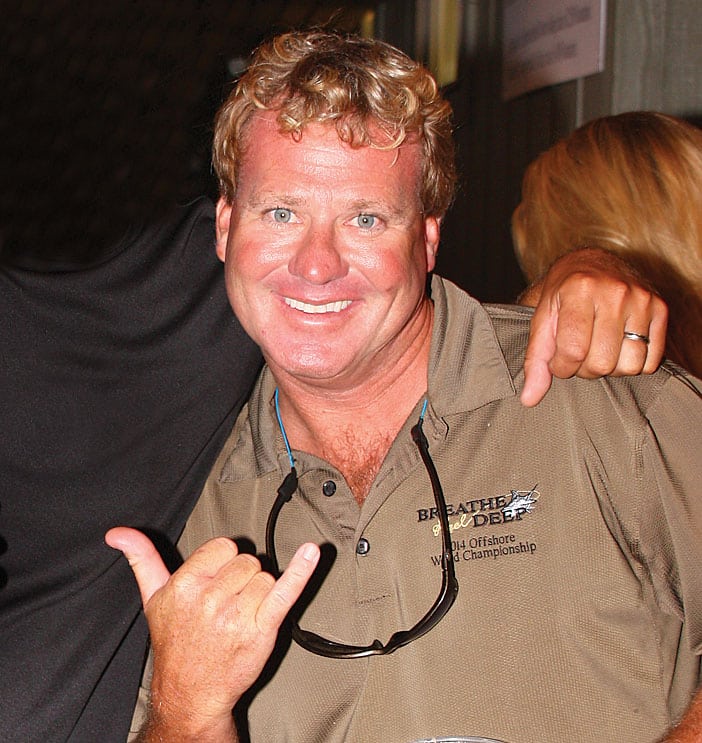
Capt. Shawn Clemons
A veteran tournament captain in the Gulf of Mexico, Shawn Clemons and his crew aboard Breathe Reel Deep have made a name for themselves lure fishing for blue marlin. He believes that with the right conditions, nothing can beat lure fishing. During the 2013 Mississippi Gulf Coast Blue Marlin Classic, the crew saw 15 billfish while others in the fleet were left empty-handed while live-baiting on the oil and natural gas rigs in the Gulf of Mexico.
Clemons’ Top Lures
1. WoolyBooger Flat Face
2. Mold Craft Wide Range
3. Marlin Magic Ahi P
4. Fathom Bill Collector
5. Black Bart Marlin Candy

Capt. Rob Moore
A native of Stuart, Florida, Rob Moore has captained Fa-La-Me, currently a 92-foot Viking, for the past 12 years. Winning several prestigious tournaments over the last couple of years, including back-to-back Triple Crowns in Bermuda, Moore and crew have become a seasoned tournament team. Moore believes that in order to catch a tournament winning blue marlin, you must pull lures, wear your lucky shorts and keep a four-leaf clover in your back pocket.
Moore’s Top Lures
1. Mold Craft Super Chugger
2. Mold Craft Wide Range
3. Black Bart 1656
4. Pakula Hothead Rat
5. Black Bart Super Plunger

Capt. Gene Vander Hoek
A native of Southern California, Capt. Gene Vander Hoek began fishing the waters of Kona in 1970, and he has landed more grander blue marlin in Kona than any other captain. Running his 39-foot Rybovich Sea Genie II, Vander Hoek has more than 30 IGFA records to his credit, several tournament wins and has been recognized by both AFTCO and The Billfish Foundation for his tag-and-release efforts.
Vander Hoek’s Top Lures
1. Marlin Magic Baby Blue Jet
2. Crampton Medium Sized Tube
3. Vander Hoek Plunger
4. Weston Leslie
5. A backup of any one of my top four.
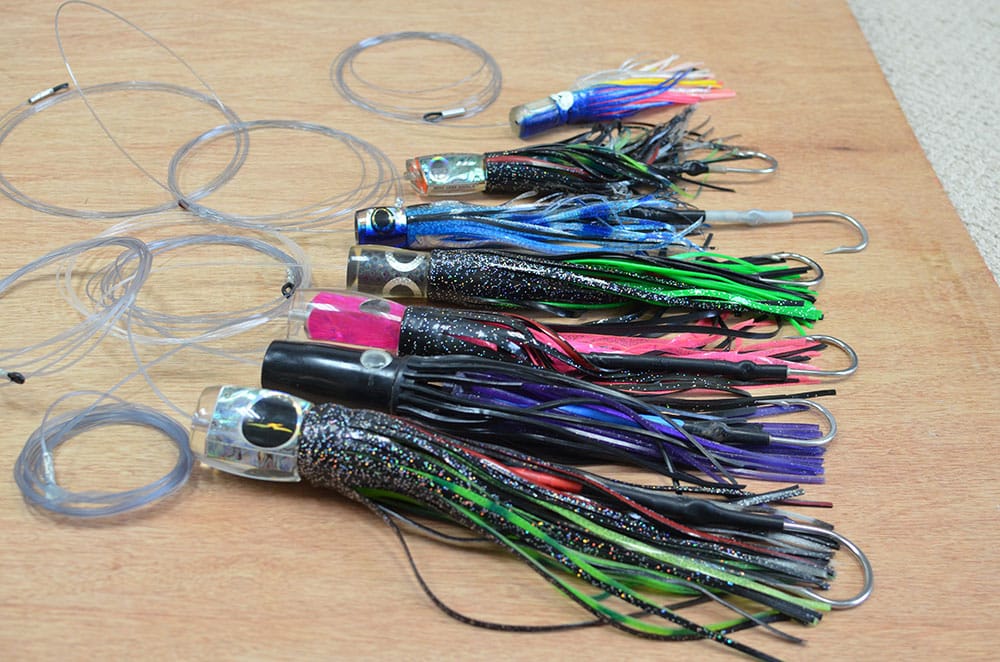
Prepping the Arsenal
Clemons: “When it comes to rigging lures, I prefer to go lighter and with smaller hooks. Over the last several seasons in the Gulf, I have noticed that more of the smaller fish are caught trolling while live-baiting around the rigs has produced the bigger fish. Don’t get me wrong — we still see plenty of large fish, but, more often than not, we are finding multiples of smaller blues and usually some white marlin and sailfish mixed in. Because of that, I opt to use a lighter leader like 300-pound Jinkai because it provides both the diameter, flexibility and clarity I like in the water. We always use single-hook rigs and heat-shrink all of our hook-sets back at the dock. However, we always keep the electrical tape handy in the cockpit when on the fishing grounds to stiffen or repair a hook-set to get the lure back in the action faster. In general, I am more concerned with color rather than the lures themselves and prefer black with pink or purple, but I will also mix in chartreuse and the old faithful American flag colors.”
Vander Hoek: “Lure rigs must be rigged perfectly. Any mistakes, such as a bad crimp or a faulty hook, will cost you at the most crucial time of the fight. You can never have your hooks too sharp, and you should get in the habit of checking your hook points after every bite because heavy drag and bone structure can ruin the points of your hooks quickly.”

Moore: “There are many different ways to lure fish, but we try to keep it as simple as possible for both crew and anglers. I’m a fan of single hooks and like to use a big hook, such as the 12/0 Mustad 7731. You have to remember that compared to bait fishing where you are trying to drop back and hook them, you are trying to snag them when lure fishing. The single hook also is much safer for the mate boat-side when trying to release the fish or remove the lure. When putting together skirt combinations, I prefer black and purple lures to anything else.”
Bates: “People make a lot of fuss about the color of lures, but I prefer black combined with any other color. Generally, I am not too worried about color, but rather care more about shape and action. When putting together my lures, I make every hook-set from scratch and custom build each one depending on the lure I am pulling. I typically only use a single hook unless I am using a very large lure that would require double hooks, and I am very particular about the type of hook I use, depending on which lure it is being combined with.”

Building the Spread
Bates: “I fish my lures right around the white wash, close behind the boat, and my typical spread consists of a mudflap dredge, two bridge teasers, two short lures fished close and two lures fished long through the rigger clips. I sometimes will run smaller shotgun lures when fishing is slow. In Cape Verde, I often pull cupped lures and try to troll around 8 knots as this gives me the action I want. If seas are calmer, I will speed up and switch over to an angled head to create more splashing action in the spread.”
Moore: “I like the ‘less is better’ approach. People typically over-think the ideal spread and make it much harder than it needs to be. I pull my bigger lures close to the boat and smaller lures in the long riggers slightly longer than I would when I fish with dead baits. I fasten my rigger lures to the outrigger clips rather than fish them through the clips. I find using number 64 rubber bands works far better than Dacron loops because you can easily adjust them as needed if weather or sea conditions change. By wrapping the rubber band tightly around the main line, you can place each end of the band into the clip so that when the fish strikes, the rigger clips pops open. I like to troll fast, often up to 10 knots, as long as sea conditions allow for it. If you see the lure is jumping out of the water too much, slow down or adjust the lure to be on the front or back of the wake. If the lure is on the crest of the wake, it will never perform as designed.”
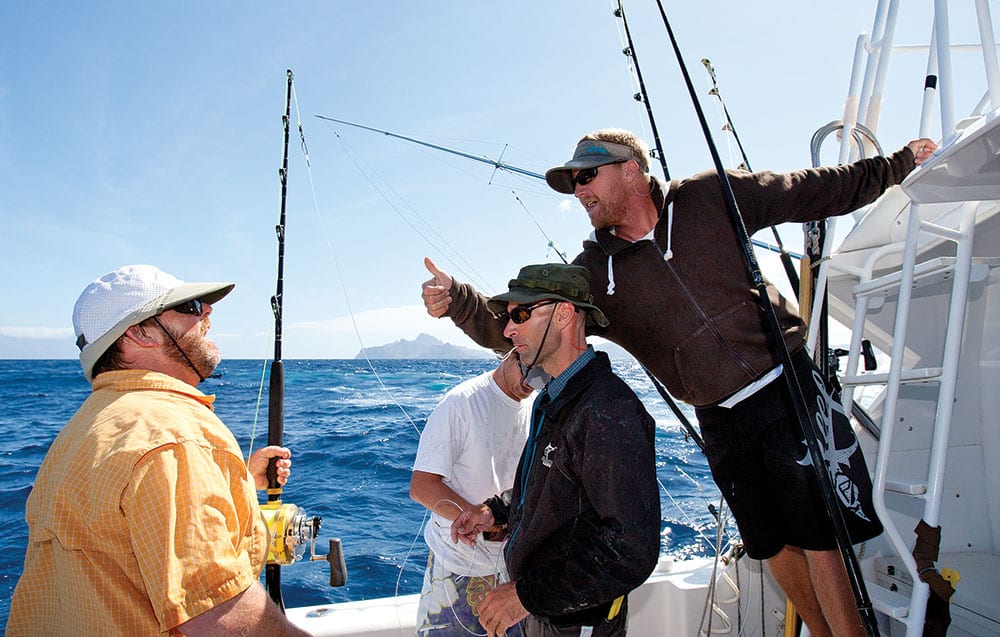
Clemons: “We troll two flat lines on the second wave and fish straight to the rods, with two short riggers fished on the fifth or sixth wave, two long riggers fished beyond the shorts, and usually a small lure fished long out of the center rigger. If conditions allow, we also throw in what we like to call the ‘mousetrap,’ a center rigger fished short between the flat lines and the short riggers. I usually troll 8½ to 9 knots — sometimes even 10 knots, depending on sea conditions. With AFTCO Roller Trollers, we can easily change how far we fish the lures from the boat, but remember that if the lure isn’t in the water, it won’t produce the action you want. I prefer to use slant-headed lures because they create a lot of action and produce a nice smoke trail in the water. If it gets rough, I will pull flat heads in the shorts and slant heads in the riggers.”
Vander Hoek: “I go by the motto, ‘Just four, no more,’ when building the spread. A lot of captains believe the more gear you have in the water, the better. This simply is not the case, and over the years, we’ve come up with an odd, yet simple, spread running just four outfits. Some may call it madness, but when you have to get after a big blue marlin in a hurry, it’s a blessing to have the cockpit cleared as fast as possible. Any extra rods can be an unnecessary evil that could ruin your chance of a lifetime.”
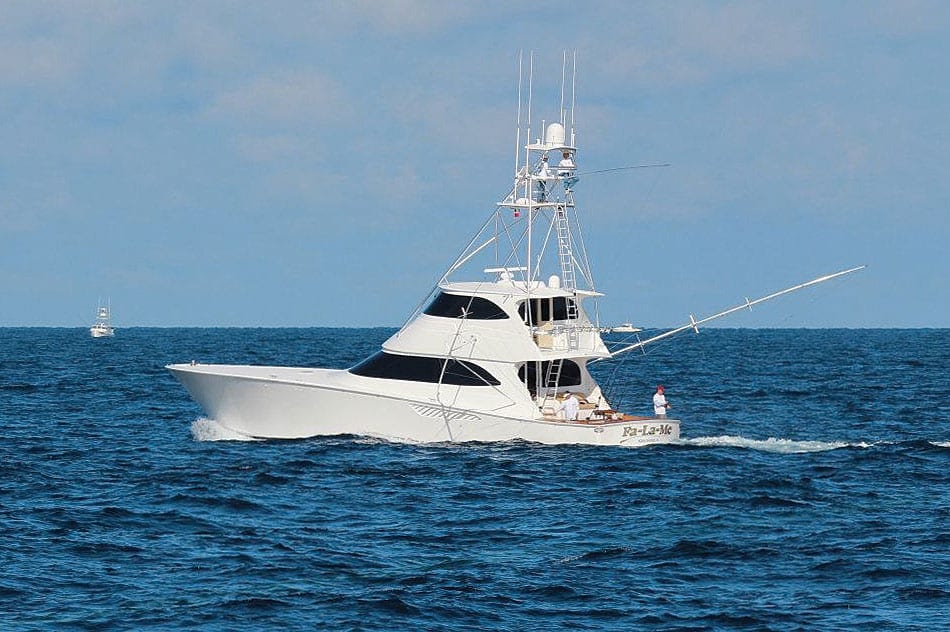
Preparing for the Bite
Clemons: “Many captains say fish don’t bite lures when it is calm and prefer a chop, but I actually prefer fishing in flat-calm seas because you can easily see the bite. Some of my best days fishing in Venezuela, Kona, Virgin Gorda and in the Gulf of Mexico have been on calm days. If you can find strong currents mixed in with a counter current creating a rip over the top of ledges or distinct contour lines, you are sure to find some action. When the fish appears, we work the lures as a team depending on how aggressively the fish comes into the spread. No two bites are alike, and the crew may need to reel lures up or drop lures back depending on where the fish is. We generally fish our 80-wides with 26-28 pounds of drag at strike, keeping the drags just below strike at about 24 pounds while waiting for the bite, then pushing up the drag to full strike once the angler has the rod under control.”
Moore: “Whether we are fishing 80s or 130s, we always fish with 22 pounds of drag at strike. When walking the docks and talking to other captains, many people think just because you are fishing with 130s rather than 80s, you need to increase the amount of drag you put on the fish at strike. We fish with both, and I have found that you don’t need the extra drag.”
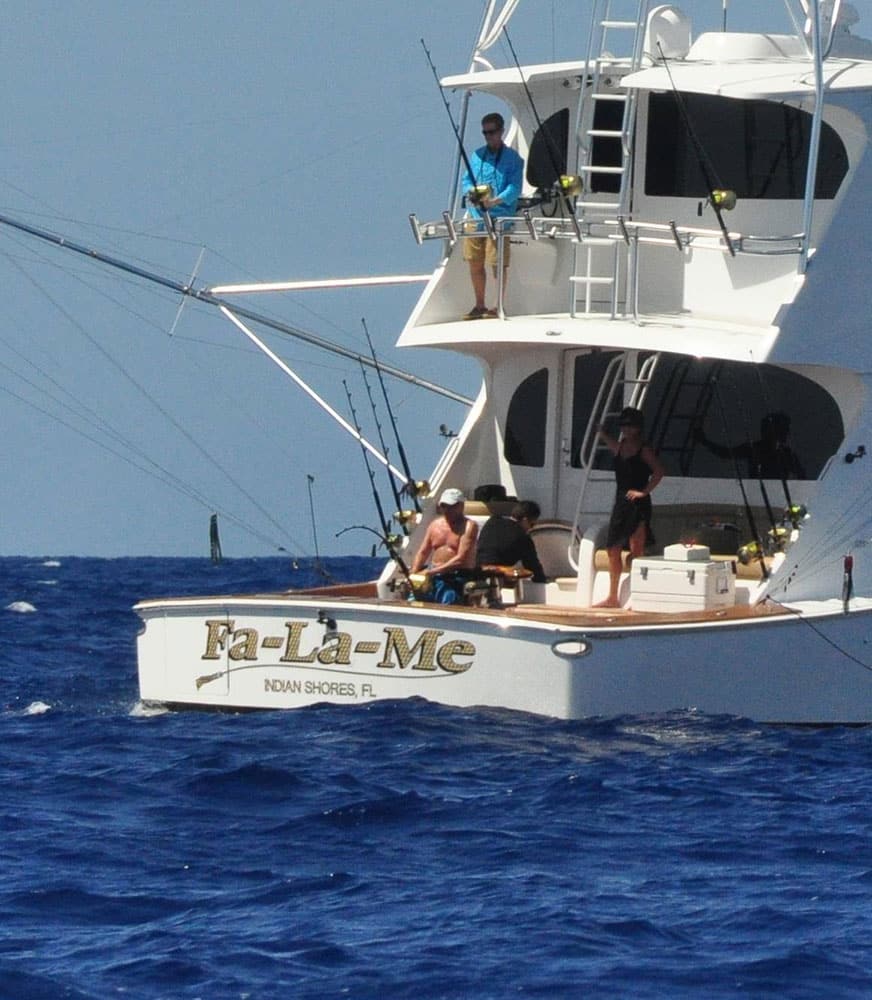
Bates: “When the fish comes into the spread, let the fish dictate how you present the baits. Sometimes you don’t always get the super-aggressive bite, but rather a lazy fish that sticks his head out of the water to check out the lure, only to sit and paddle behind it. When this happens, I do some of the work for him to try to change his mind. By pulling the boat out of gear, the lure falls right back to the fish as if it were dead in the water. This often induces the bite, and as soon as I see the fish attack the lure, I push the boat back into gear and engage the hook.
Because we often have smaller blues off Cape Verde, I fish my drags very light with a running drag just above free-spool that lets the reel go into free-spool once the strike occurs. I typically do not have the angler lock it up until they have the rod under control and to the chair.”
Vander Hoek: “Proper drag management is crucial before and during the fight. It’s a good idea to mark your drag settings on the reels so you know how much pressure you have at strike, as well as if you need to back off the drag a bit. Some of our giant blues can take you to the limit in a matter seconds; having your drag at the appropriate setting can make the difference between success and another big one that got away.”
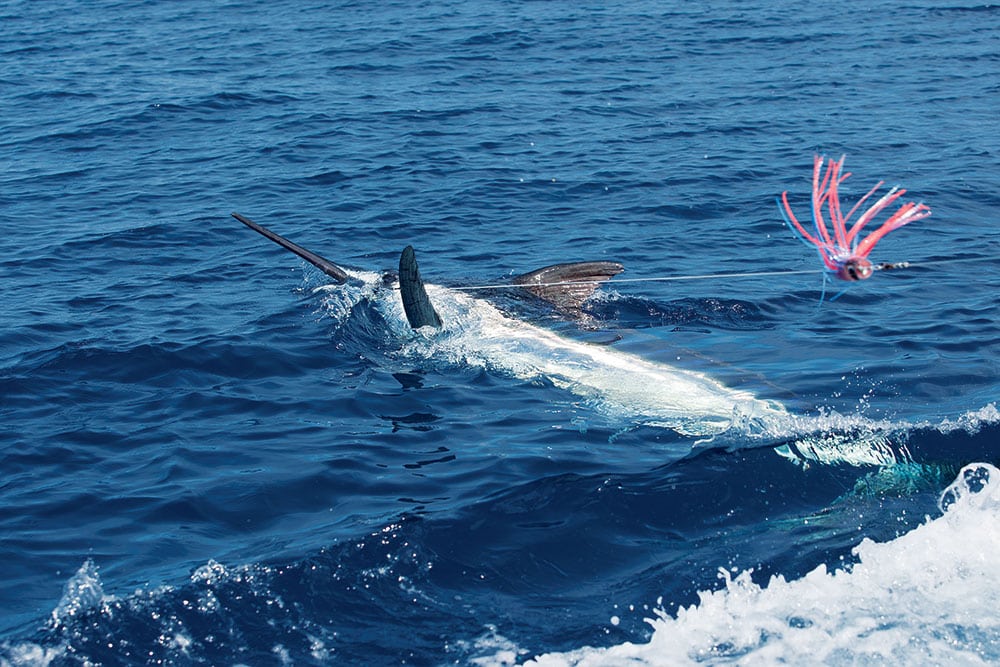
Fighting the Fish
Bates: “After the angler is in the chair with the fish running away from the boat, I have the angler push the drag up to 30 pounds to engage the hook and then have them back the drag down to 17 pounds after the initial run. If the fish stays on top and continues to jump, I have my angler back off the drag even more to distinct marks on the reel so we both know how much pressure is on the fish. It is important to stay off the fish as much as possible during the fight. The last thing you want to do is get straight up and down with the fish, and by giving him a little bit of space, you can gain an angle to give you an advantage in the fight.”
Moore: “I am constantly nervous when backing down because I am not sure how well the fish is hooked. It may be bill wrapped or hooked in a location where you don’t know how much pressure it can take. In general, I have found it better to back down toward the fish rather than toward the belly in the line. The water pressure on the line will keep the line tight enough on both the fish and the reel, and if you chase the fish rather than following the belly, you get closer to the fish faster. The angler must wind as fast as they can so once you are close, you can get the excess belly out quickly and get tight to the fish.”
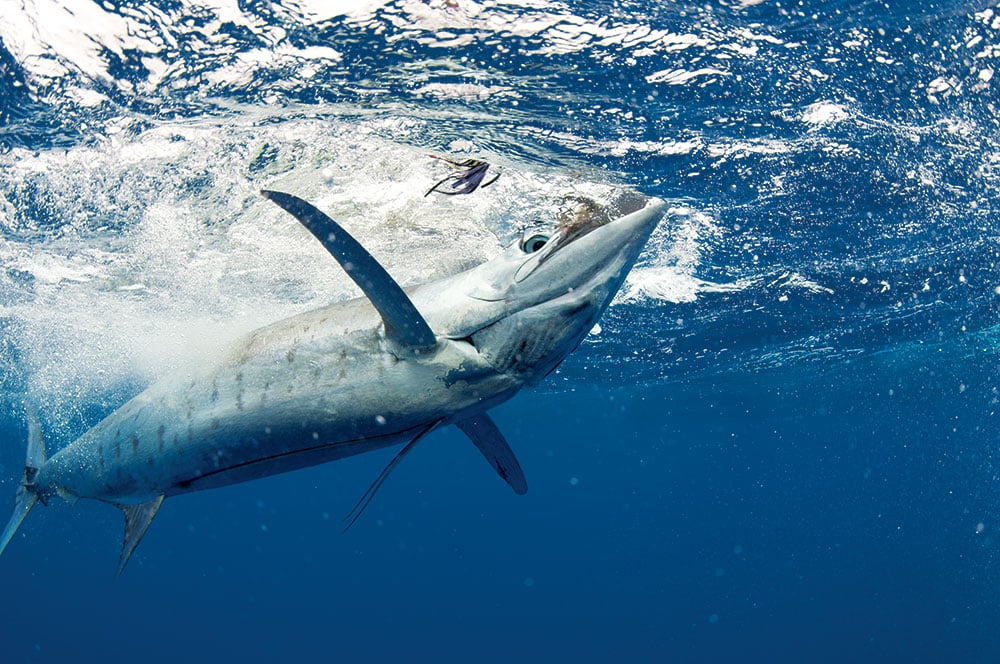
Clemons: “After the bite, I give a little bit of throttle to make sure that the line stays good and tight. I won’t floor it like I have seen some captains do, but it is important to keep the line as tight as possible. If I am going to back down on the fish, I have them clear the flats as quickly as possible and leave my short riggers in the clips in case the crew needs to get other things situated first. I make sure to clear those lines once we start gaining on the fish and we need to spin. It is important to keep a good angle on the fish, not just from a control perspective, but also so you know where the fish is in hopes of anticipating its next move.”
Vander Hoek: “Young captains and crews can’t wait to get behind the wheel and tear the ocean a new one, but my golden rule is you can only maneuver on a fish as fast as the angler can reel. If you’re racing backward and your angler is turning the handle as fast as they can, but there is slack line filling the reel, there is no pressure on the fish. You need to calm down and find the right speed to allow you to pressure the fish while closing the gap. Just because you can get to the big one quickly doesn’t mean she’s necessarily ready to be taken. Most monsters are broken off on the leader or have the hooks ripped out because not enough pressure was applied during the fight. Success comes from pressuring the beast into submission.”
Every captain I spoke to said that when conditions are right, you cannot beat the productivity of lures. Not only does it provide you the opportunity to cover a lot of ground, it also proves to be a tried-and-true technique for landing a big fish. You can have a great day catching a pile of fun fish that can earn you large payouts during tournaments as well.
